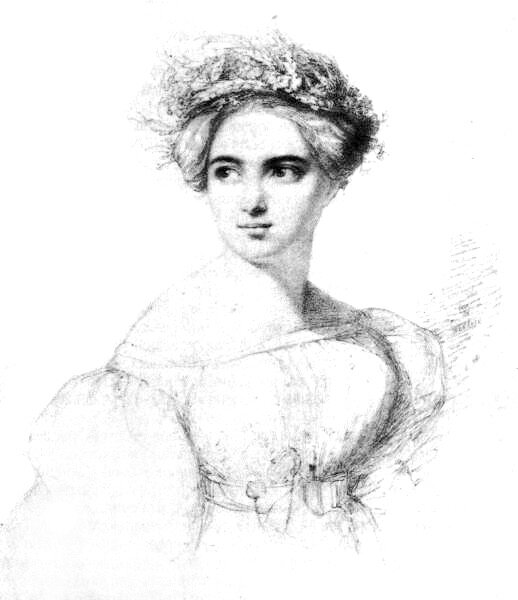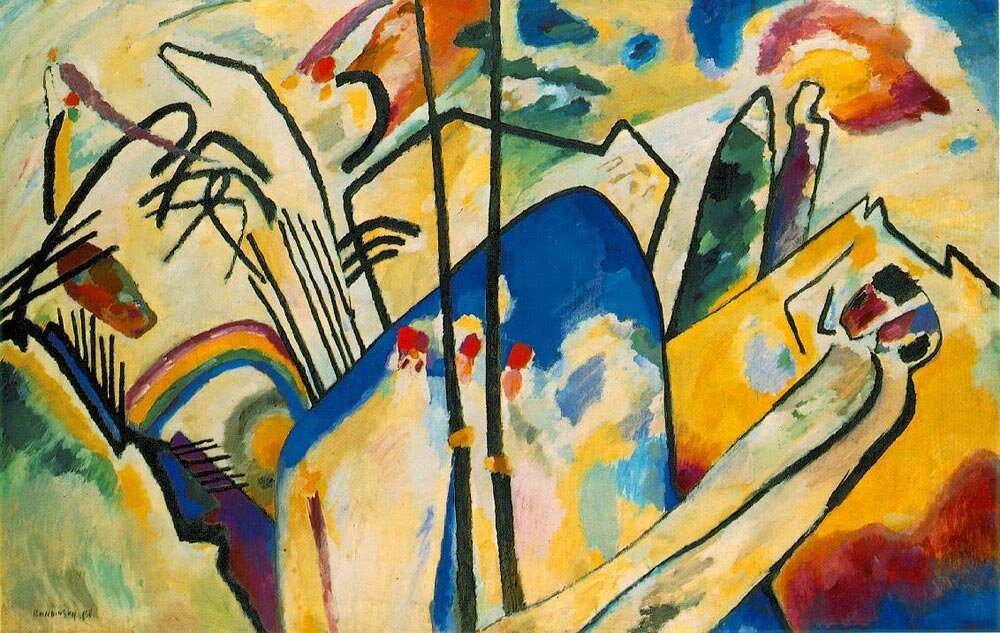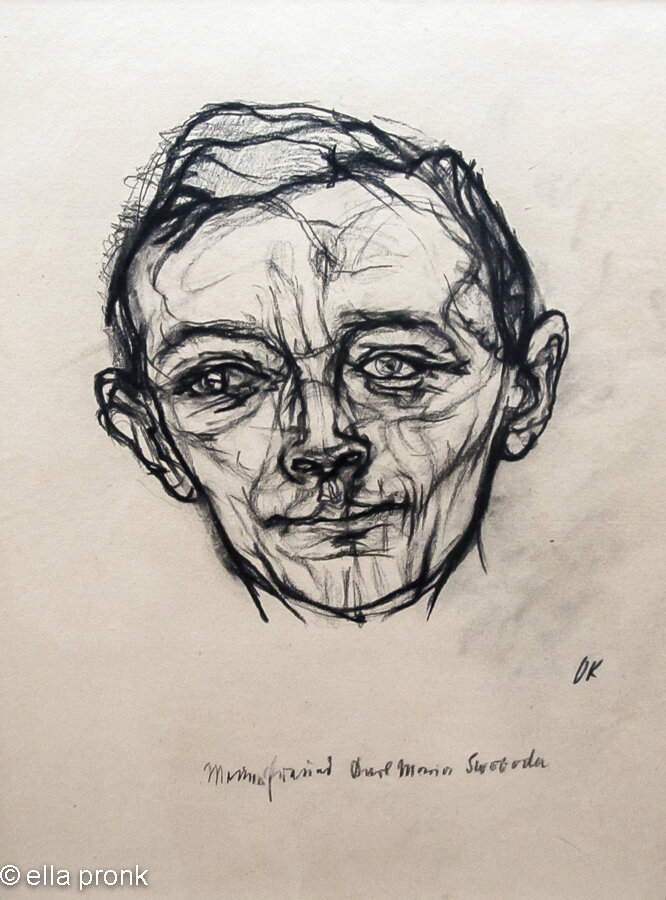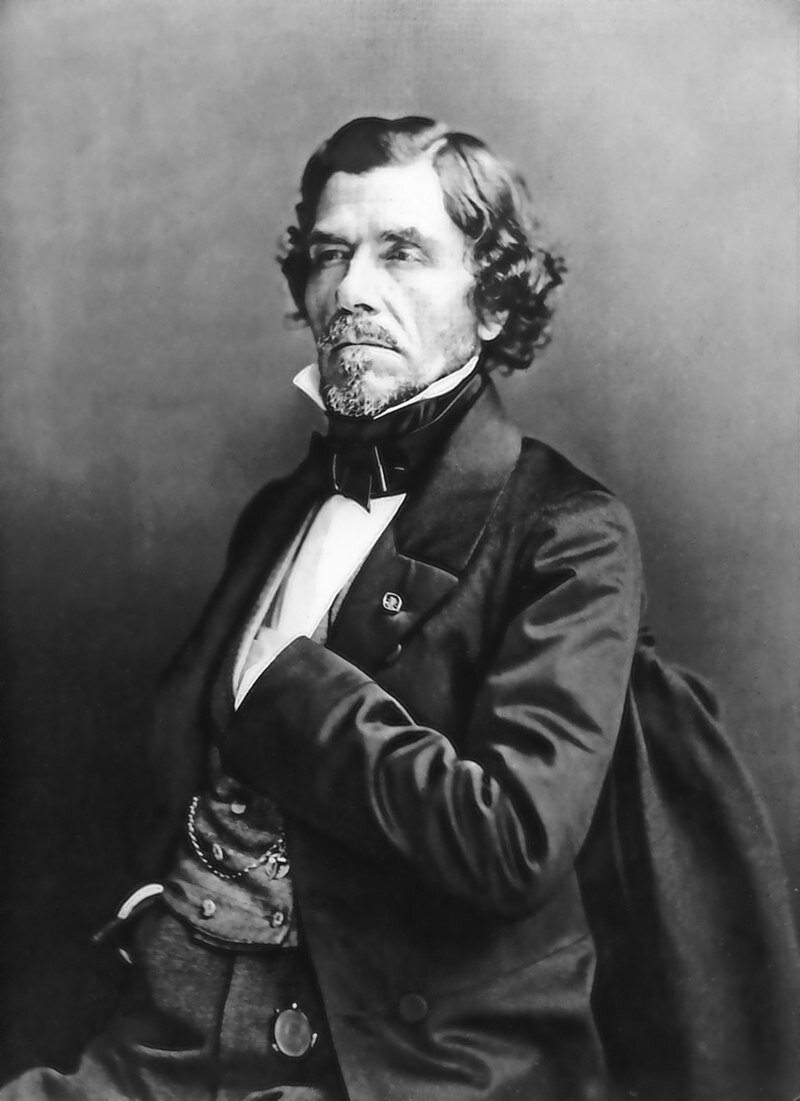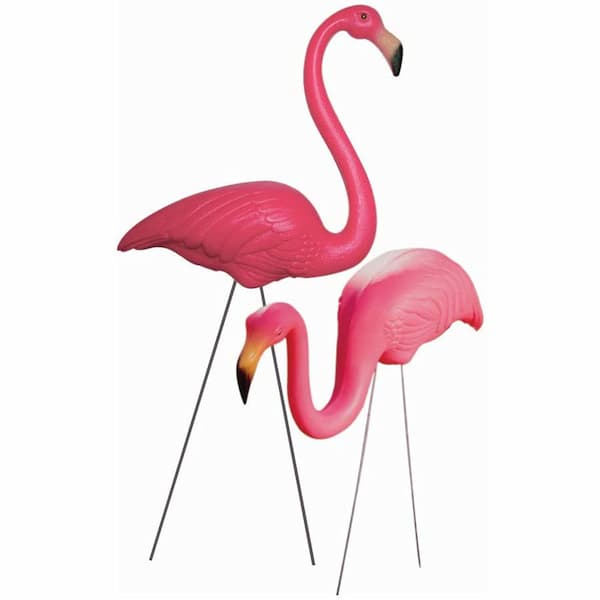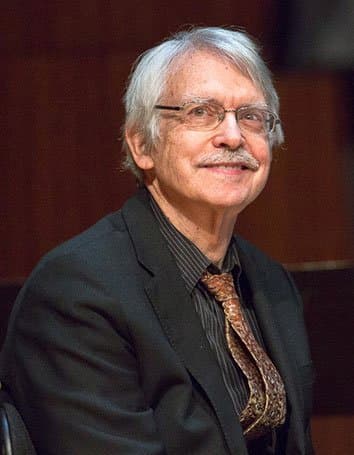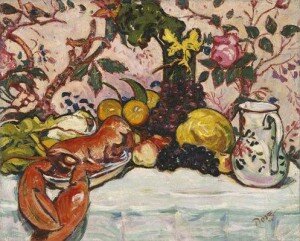
Dove: The Lobster (1908)
Arthur Dove is considered one of America’s first abstract painters. He started his work in university, illustrating the graduation yearbook. He then went to Europe in 1907, going to Paris, the artistic centre of the new century. In Paris, he was exposed to the new styles at the end of impressionism, such as Fauvism, which were increasingly drawing away from pure representation. When he returned to New York, he became part of the Stieglitz school in New York. The photographer Alfred Stieglitz promoted modern art in America and encouraged Dove in his creation of his first abstract works. His last representational work, The Lobster, was painted before Dove left France and was shown in a 1910 exhibition at Steiglitz’ gallery.
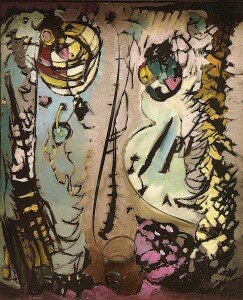
Dove: George Gershwin – Rhapsody in Blue, Part I (1927) (private collection)
In 1927, Dove was being influenced by the modern music of Jazz. He painted six paintings based on the music of George Gershwin and Irving Berlin in 1927. The three George Gershwin paintings were: George Gershwin – Rhapsody in Blue, Part I; George Gershwin – Rhapsody in Blue, Part II; and George Gershwin – I’ll Build a Stairway to Paradise.
Rhapsody in Blue, the music, was commissioned by bandleader Paul Whiteman and Gershwin responded with a work that brought together sounds he had heard on the train to Boston, ‘its steely rhythms, the rattle-ty-bang,’ that Gershwin construed as a ‘sort of musical kaleidoscope of America – of our vast melting pot, of our unduplicated national pep, of our blues, our metropolitan madness.’
Gershwin: Rhapsody in Blue (Oscar Levant, piano; Philadelphia Orchestra; Eugene Ormandy, cond.)
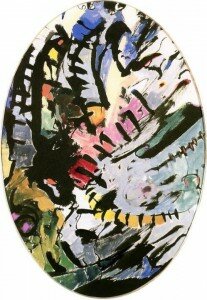
Dove: George Gershwin – Rhapsody in Blue, Part II (1927) (private collection)
The first recording, done on one 78 rpm record, divided the work into two parts for each side of the record. In order to fit on the record, the work was cut down (the Whiteman recording, with Gershwin at the piano was just under 9 minutes; the 1942 Levant recording above is over 12 minutes; a recent Los Angeles Philharmonic recording is nearly 16 minutes). A 12-inch 78rpm recording, the size used for most classical or operatic recordings, could hold 4 to 5 minutes of music per side. To fit the music on, the recording with Gershwin at the piano is also much faster than we are now used to.
This recording was divided between the opening Allegro and Part II began with an abridged slow middle section and continued through the finale.
Gershwin: Rhapsody in Blue (George Gershwin, piano; Paul Whiteman Concert Orchestra; Nathaniel Shildret, cond.) Record turn is at 04:23
Dove divided his two images to reflect the division of the 78-rpm record. In Part I, Dove uses blue colour to reflect the ‘blue notes’ in the Rhapsody. Visible in the bottom center of the painting are the metal clockwork springs that Dove used to convey the ‘shrill, steely qualities’ of the work, particularly the clarinet glissando that opens the piece.
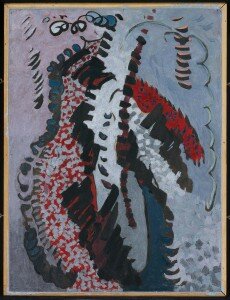
Dove: George Gershwin-I’ll Build a Stairway to Paradise (1927)
The third picture Dove did on Gershwin was based on the Act I closing number in George White’s Scandals of 1922, ‘I’ll Build a Stairway to Paradise.’ Its most memorable appearance, of course, was 30 years later in the Gershwin-homage film, Vincent Minelli’s An American in Paris. As sung by Georges Guétary, it became a show-stopping Follies number.
As the first act finale (and hit) of George White’s Scandals of 1922, Gershwin’s piece was a hit and quickly entered the jazz mainstream as a standard. Dove would have heard it as part of a different concert at Aeolian, sung by Eva Gauthier, with Gershwin at the piano.
The Hollywood version doesn’t quite capture the true jazz feeling of Whiteman’s original 1922 recording, which Dove played over and over as he painted. Gershwin described the spectacular 1922 production number: “Two circular staircases surrounded the orchestra on the stage, leading high up into theatrical paradise or the flies, which in everyday language means the ceiling. Mr. White had draped fifty of his most beautiful girls in a black patent leather material which brilliantly reflected the spotlights. A dance was staged in the song and those girls didn’t need much coaxing to do their stuff to the accompaniment of Whiteman’s music”. You can see the parallels of the beautiful chorus girls and the central staircase in Minelli’s film version.
In Dove’s painting, the stairway of the title, shown with the horizontal black ticks, carries the viewer from the dark blue and red at the bottom to the explosion of silver at the top. Festive streams convey the energy in the music.
Dove started this painting in pastels but within a week had moved to oils to better express the music in visual terms. The work was first exhibited in December 1927 in Stieglitz’ gallery. The reviewer for the New York Times, Edward Alden Jewell, later the owner of the work, said: ‘Yet even one who does not understand is caught now and then with an inexplicable and fugitive thrill before some orchestration of color and form.’

